Devi Tripurasundari is one of the deities belonging to the Dásá Máhávidyas. She is also worshipped as the most potent incarnation of the Devi, or simply the ságuna-roopa of Adi Parasákti (the Supreme Being in Sáktitva, and also the feminine aspect of Para Brahman). Devi Tripurasundari is hailed as a great unifier in Sáktism. She, along with Sada-Siva (or Tripuratanka) is responsible for the Pancha-Krityas – sristi or creation, sthithi or protection, samhara or destruction, thirodhana or concealment of the world in maya, and anugraha or final liberation. Devi Tripurasundari is worshipped in many temples across India, noteworthy being the Tripura Sundari Mandir, located in the ancient city of Udaipur, about 55 km from Agartala, Tripura.
The Tripura Sundari Mandir is one among the 52 Sákti Peethas of Bharat; and, according to the popular story of Sati’s death by self-immolation, her right leg had fallen here. Ma Tripura Sundari is worshipped by all people of Tripura, from the Twipras (Debbarmas, Reangs, Jamatias, Murasings) who are the original inhabitants of Tripura, the Bengalis of Tripura, to the Tripura royal family. According to the Brahmanda Purana, Visnu became the elder brother of Parvati in her swaroop as Ma Tripura Sundari, and helped her to be the consort of Siva. Hence, perhaps because of this reason, along with Ma Tripura Sundari/Tripuresvári at the Tripura Sundari Máhávidya temple, Visnu is also worshipped in the form of a sáligrama.
The Tripura Sundari temple is built atop a hillock, which is in the shape of the back of a tortoise (kurma). In the Sákta parampara of Sanatan Dharma, this is believed to be one of the most sacred sites for a Sáktipeeth to be located. According to a story associated with the temple and as written in the Rajmala, king Dhanya Manikya who ruled over Tripura in the closing years of the 15th century, had a revelation one night in a dream in which Ma Tripura Sundari instructed him to shift her murti from Chittagong (in present-day Bangladesh) and initiate her worship on the hillock near Udaipur, the then capital of the kingdom.
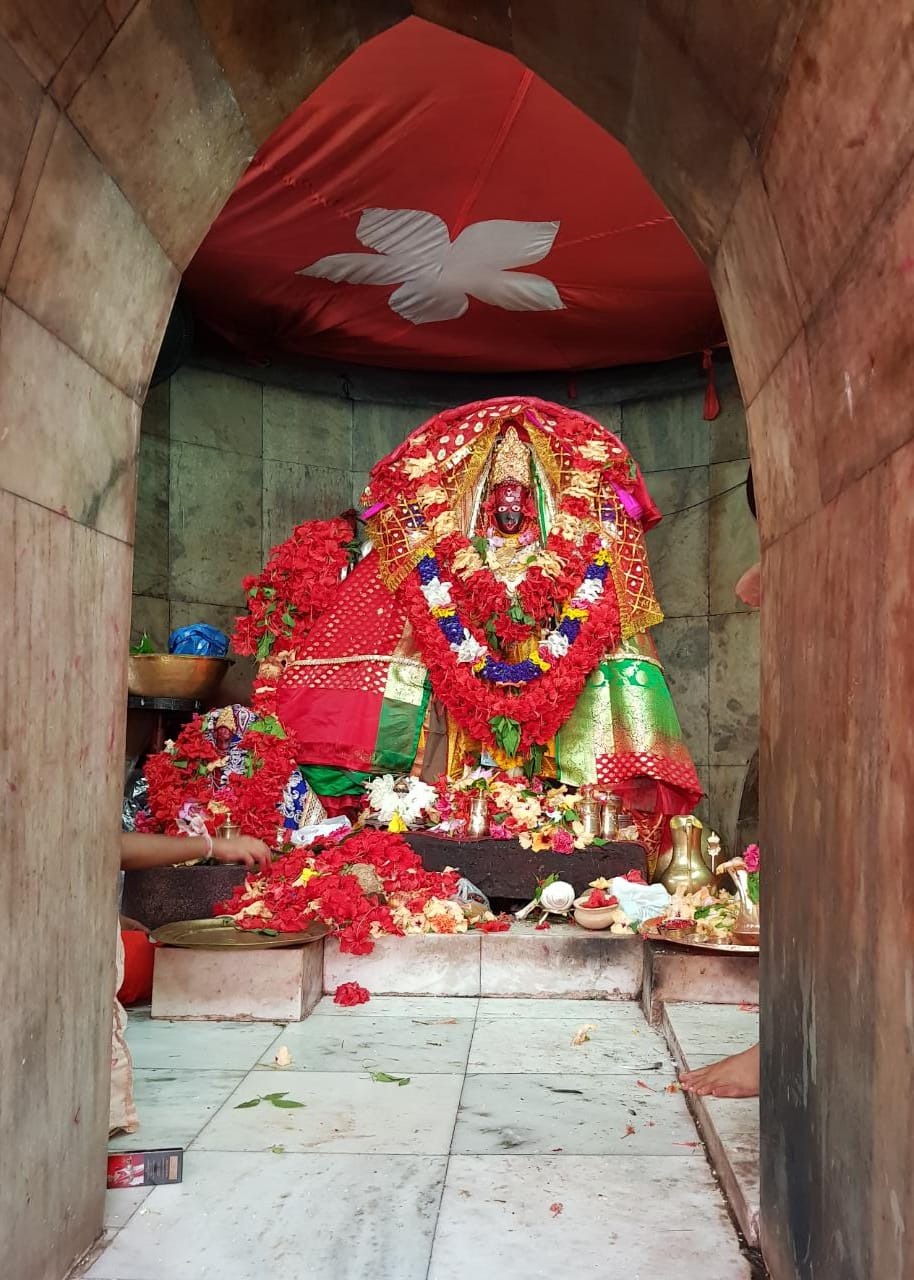
Má Tripura Sundari, also known as Soroshi or Chhoto Má among the Hindus of Tripura
The king found out that a temple on the hillock was already dedicated to Visnu. He was in a dilemma, unable to decide how a temple dedicated to Visnu could have a murti of Sákti. The following night, the divine vision was repeated again, with Ma Tripura Sundari coming along with Brahma, Visnu and Máheswara. The king understood that Visnu and Sákti were different swaroops of the same Brahman. Thus, the temple of Ma Tripura Sundari in present-day Agartala came into being. The temple of Ma Tripura Sundari is the place of convergence of Vaisnava and Sákta followers of Tripura.
The Chaturádása temple (Chaturádása literally meaning ‘the temple of 14 deities’) is another popular Hindu religious place of worship in Tripura where 14 Kokborok deities (important deities of the Tripura royal family) are worshipped. These deities include – Brahma, Visnu, Siva, Durga, Laksmi, Kartikeya, Saraswati, Ganesa Samudra, Prithvi, Agni, Ganga, Himadri, and Kamadeva. They are known by the local names of Burasa, Lampra, Bikhatra, Akhatra, Thumnairok, Sángroma, Bonirok, Twima, Songram, Mwtaikotor, Mailuma, Noksumwtai, Swkalmwtai, and Khuluma respectively. The historical belief is that the mother of Raja Trilochan who was the king of Tripura, had saved these 14 deities from being killed by a wild buffalo when she had gone to bathe in the Maharani river. The deities eventually killed the beast with her help.
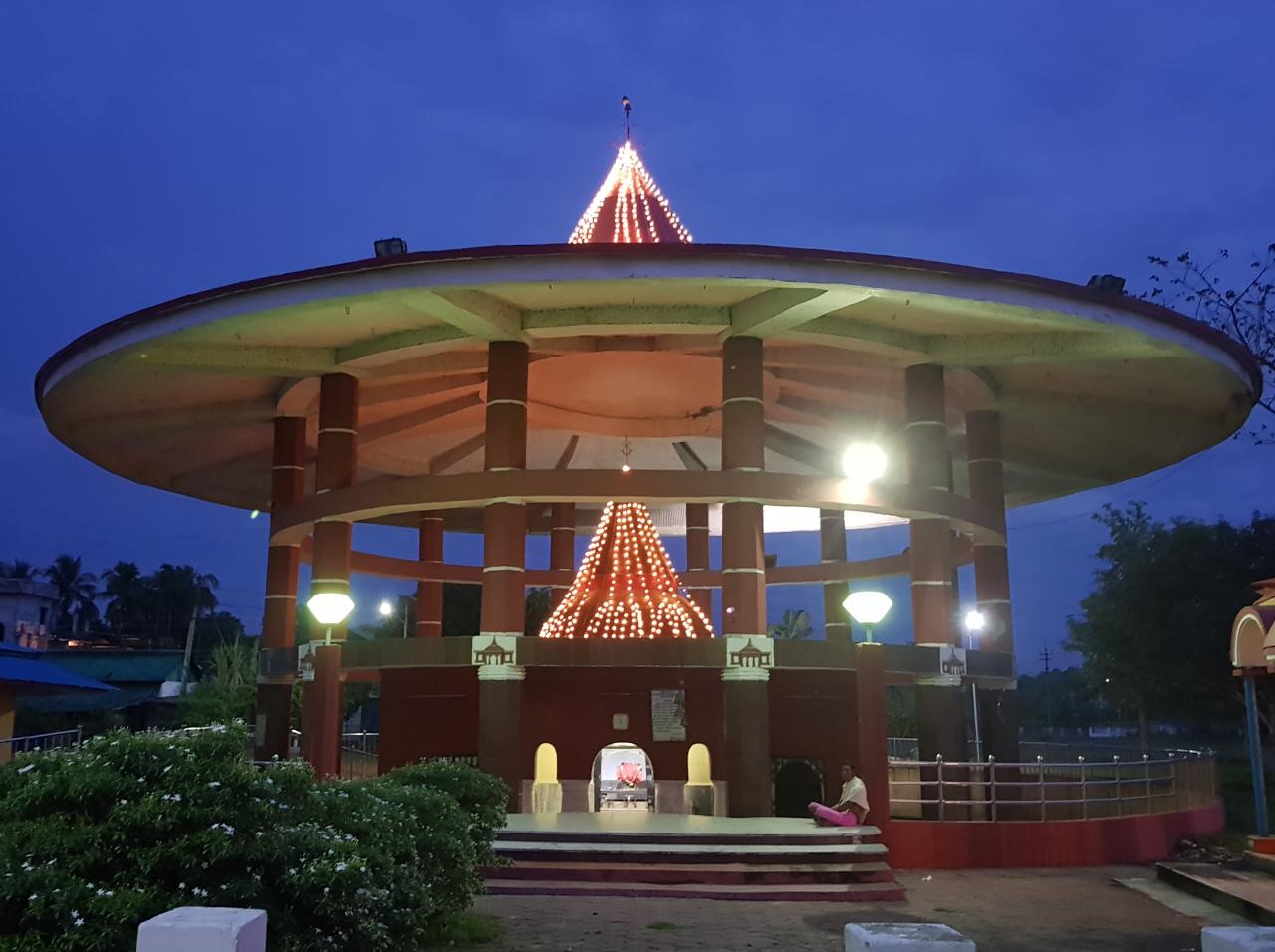
Chaturádása temple, Tripura
Happy with the efforts of the king’s mother, the 14 deities visited King Trilochan's palace in Udaipur. The royal family offered Puja to the fourteen deities and also sacrificed wild buffaloes. Kharchi Puja is a century-old, important Hindu religious festival celebrated at this temple. A beautiful amalgamation of Sanatan Hindu and local Kokborok customs, Kharchi Puja is celebrated annually during the month of Aashad (June-July), 15 days after the end of the Ambubachi celebrations at the Ma Kámákhya Sáktipeeth. The festival stretches for around a week, but sometimes even more. During this Puja, goats, pigeons, and buffaloes are sacrificed to propitiate the Devi with blood. Kharchi Puja is believed to be a way of purifying Bhúdevi or Mother Earth after Ambubachi.
With the onset of Kharchi Puja, thousands of people from not only Tripura but also various other parts of the country could be seen circling around the Chaturádása Devta temple. The word Kharchi is derived from two different words – Khar which means sin; and, Chi meaning cleanliness. Together, it means the purification of the body and mind of the people. The rituals of Kharchi Puja begin after the Raj chantai (mukhya Pujari) and his fellow Pujaris take the 14 deities to the nearby Saidara river, which is followed by a bath in the sacred waters. The deities are then brought to the temple, decorated with flowers and vermilion applied to their foreheads.
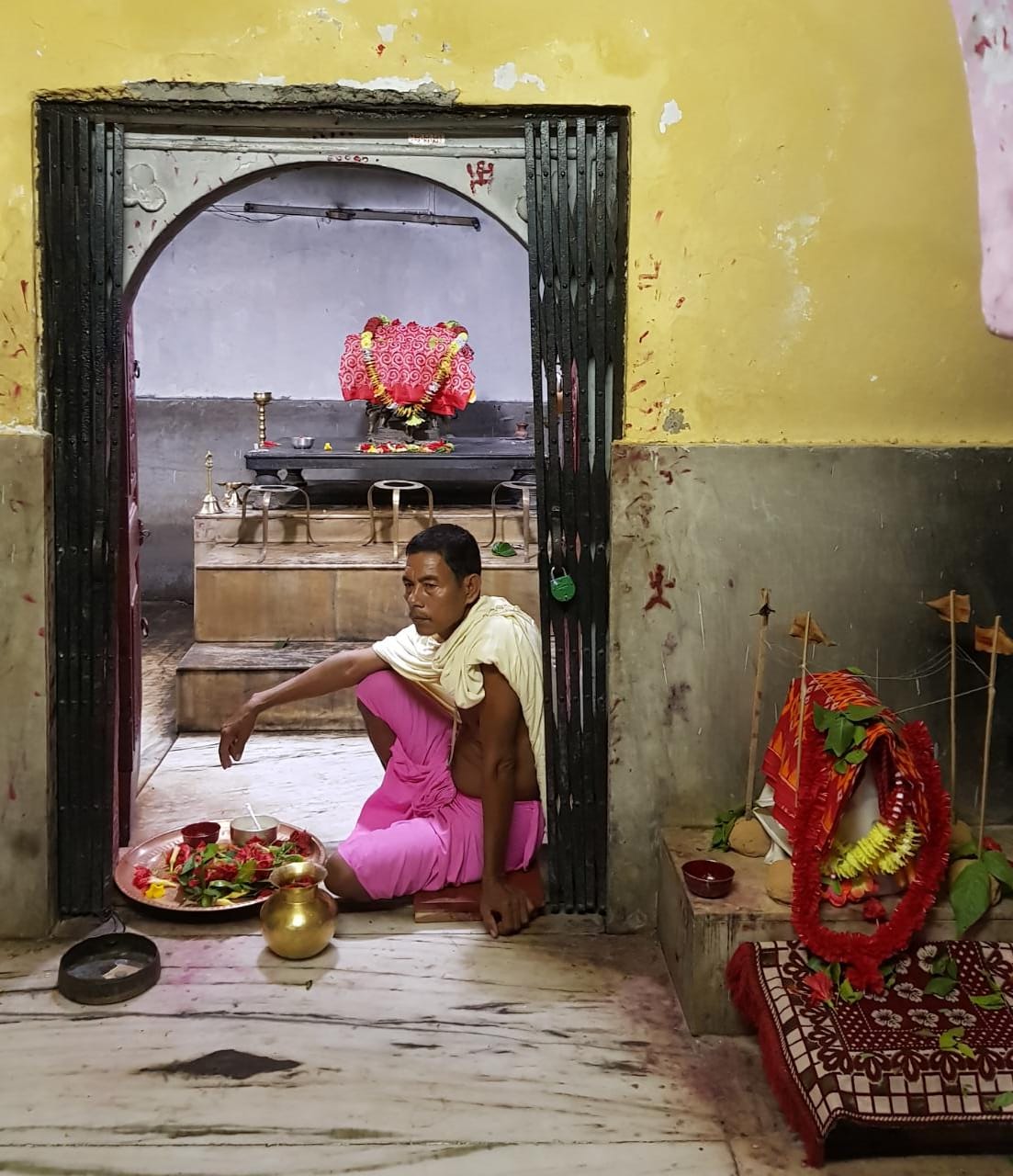
The Raj chantai inside the Chaturádása temple of Tripura
The popular belief is that Kharchi Puja was started in 1760 AD by the then Maharaja of Tripura Krishna Manikya Bahadur. Since then, this festival became an annual celebration in Tripura, continuing in full spirit till the present times. Cultural programs are organized in the evening during the entire 7-day period of the celebration of Kharchi Puja. A fair is also organized to commemorate the occasion. Two weeks after the end of Kharchi Puja in Tripura, another popular festival known as Ker Puja is celebrated in the honour of Vaastu Deváta. People believe that the former rulers of the past used to perform this Puja for the general welfare and well-being of the people of their state.
Ker is considered as the guardian deity of Vastu Deváta. A large piece of bamboo bent in a particular fashion assumes the image of Ker, and it is fast rotated to produce a sound. The literal meaning of Ker is a boundary or specified area from where no one is allowed to enter or come out for two and a half days during the celebration. The chantai or mukhya Pujari is regarded as the king of the occasion. Celebrated amid great fanfare with financial support from the State Government of Tripura, Ker Puja is associated with various traditional beliefs and practices of the people of Tripura.
The religious rituals of the Puja begin early in the morning, with offerings of meat and blood being made to the deity. Expectant mothers, aged and ailing people are shifted to the neighbouring villages before the beginning of the Puja ceremonies. People in the surrounding areas are not allowed to step beyond the boundary till the Puja is over. If any person enters the boundary by mistake, he/she is not allowed to move back from the place. The devotees engage in dancing and feasting in the evening after the Puja comes to an end. It may be mentioned here that Ker Puja was originally initiated to protect people from diseases, destitution, and external aggression. Tripura police personnel fire guns before the beginning of the rituals of Ker Puja and as well as at the end of it.
Because of religious proselytisation activities of the Christian missionaries in the North-East, the traditional ways of lives and belief systems of the people here have borne some of the worst impacts. Whereas some have managed to survive, others have been dying a slow death. The Sanatan Hindu heritage of North-East India is a less talked-about subject, and the worship of Sákti in different forms constitutes an integral part of this heritage. Prior to the advent of Christianity in the North-East, each state of this region had their own unique system of worship of local Devis and Devátás rooted in their own traditions and religious belief systems. Both Sivá and Sákti constituted a very important part of this system which was developed holistically based upon the well-being of all in the Universe.
It would not be a far-fetched argument to say that the Christian-dominated states of Nagaland, Meghalaya, and Mizoram have lost these local Dharmic traditions forever. They, however, still continue to survive in neighbouring Arunachal Pradesh, especially among the Noctes, Wanchos, and Apatanis. The Konyak Nagas of Haanhsora Aadorxo Naga Gaon in Sivasagar district of Upper Assam, who follow the Mahapurusiya Naam Dharma tradition of Srimanta Sankardeva, also stand out in this regard. In Tripura, the Hindu Jamatia, Reang, and Hajong communities are continuously battling a daily struggle for survival of their lives and religious belief systems in the face of not just Christian evangelism but also the rapid changing demographic character of the state, perpetrated by illegal immigration from across the border with Bangladesh.
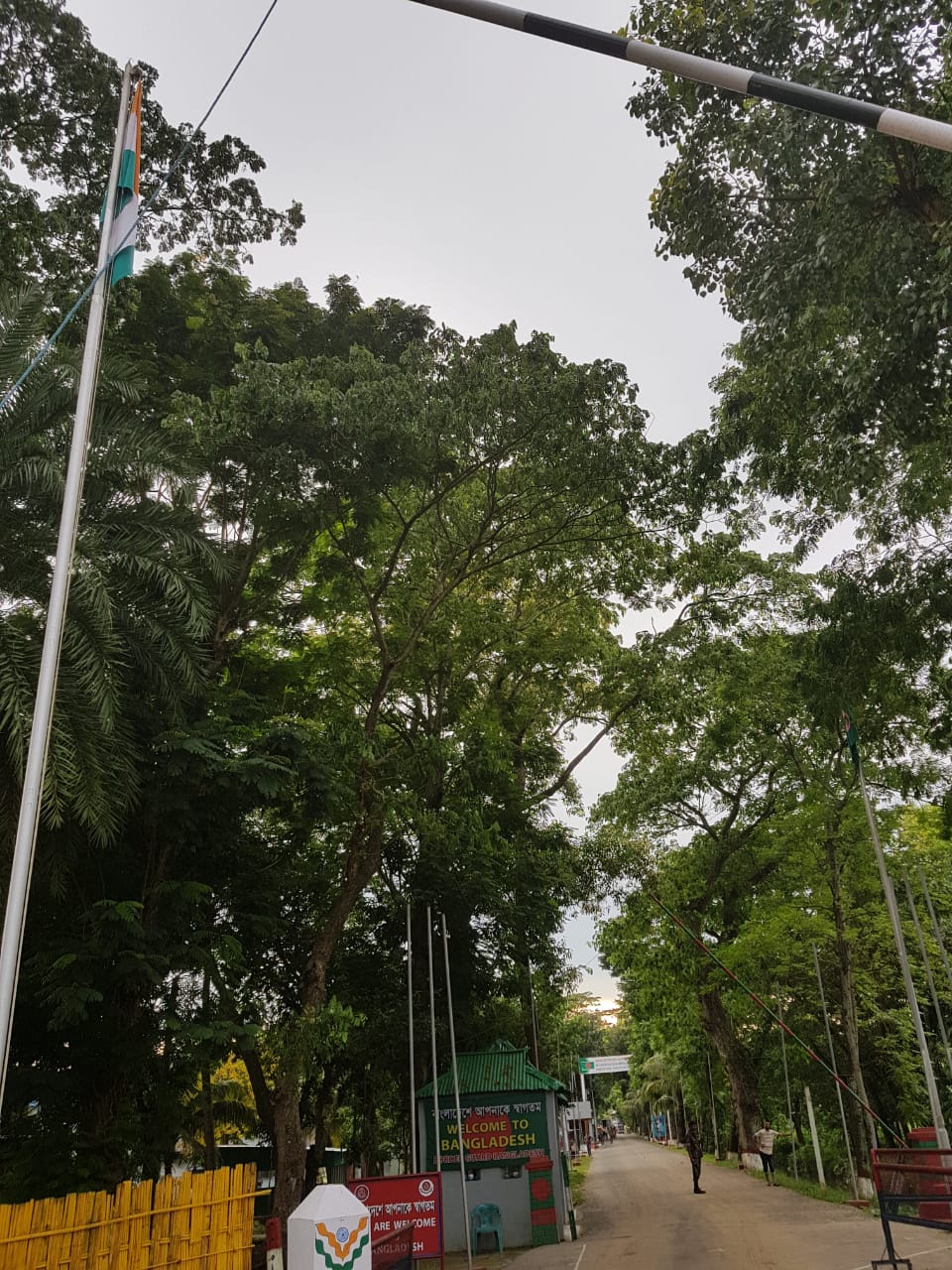
Tripura’s border with Bangladesh in Agartala
In the face of these and numerous other challenges, it has now become all the more important to work towards the preservation of the traditional systems of religious beliefs and practices of different groups and communities of people in the North-East. It is also important to understand the fact that although influenced by various local elements, these practices and beliefs are not different from Sanatan Vedic practices. At present, Assam, Arunachal Pradesh, Manipur, and Tripura are the only states where Sanatan Dharmic faiths are still in existence. Both the Mahabharata and the Ramayana are an integral and inseparable part of the history and culture of the North-East. The festivals, different dance forms, and all the surviving Hindu religious places of worship in the North-East are proof enough of this fact.
The pictures used in the article are from the author’s own personal collection.
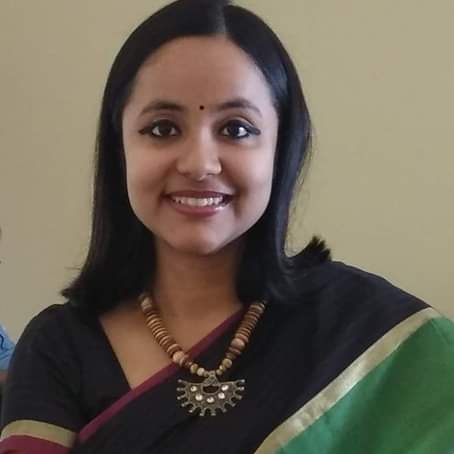 The writer is associated with the Center for Indic Studies, Indus University, Ahmedabad as an Assistant Professor. Her area of interest is North East India, it's history, culture and civilization before the advent of Christianity in the region. She is also a public speaker, writer and Columnist.
The writer is associated with the Center for Indic Studies, Indus University, Ahmedabad as an Assistant Professor. Her area of interest is North East India, it's history, culture and civilization before the advent of Christianity in the region. She is also a public speaker, writer and Columnist.
NEXT ARTICLE

At the southernmost tip of this mesmerising ensemble lies the majestic Great Nicobar Island, boasting an impressive landmass of about 910 square kilom...

Bharath has always been a land traversed by spiritual masters/ Guru since time immemorial. These spiritual masters have always upheld the core princip...

South India contains its fair share of unique pilgrimage centres. These divine places of worship have a prominent Sthala Purana, devoted followers, di...